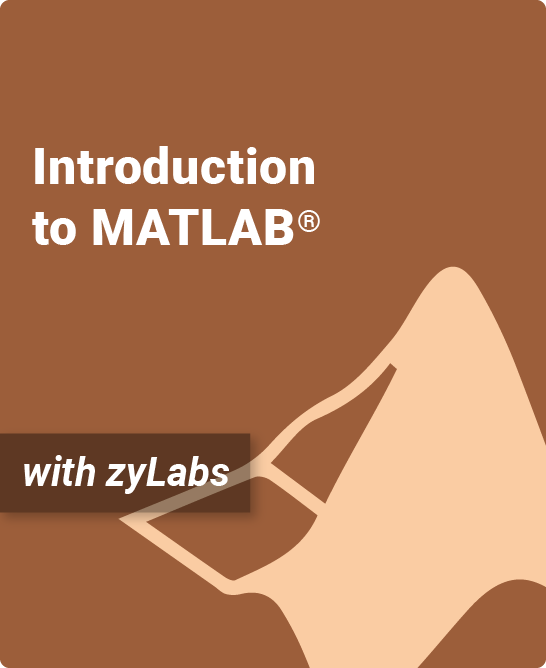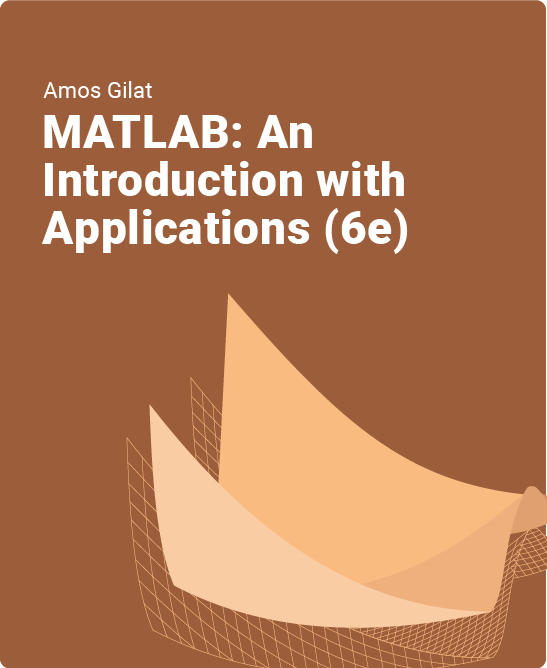Teaching MATLAB for Engineering Problem-Solving—zyBooks Guide
By Dr. Nikitha Sambamurthy, Dr. Adrian Rodriguez, Dr. Yasaman Adibi, and Dr. Gregory Mason
Introduction
MATLAB ranks among the top three requested programming skills in engineering job postings. Analysis of over 130,000 postings presented at the 2022 ASEE Conference confirms its continued relevance across biomedical, chemical, electrical, and mechanical engineering positions. Yet instructors teaching MATLAB face a persistent challenge.
In most first-year engineering courses, roughly one-quarter to one-third of students enter with no programming background while others arrive already proficient in Python, Java, or MATLAB itself (see this research paper and this one). Traditional uniform instruction serves neither group well. Novices fall behind and disengage. Experienced programmers lose interest. The middle group completes assignments without developing deeper problem-solving capabilities.
The widespread availability of AI tools intensifies this challenge—students facing frustration can now obtain working code in seconds without developing the computational thinking skills the assignments were designed to build.
Two evidence-based strategies address these challenges: strategic scaffolding and context-specific feedback. These approaches support diverse preparation levels while connecting computational skills to engineering thinking.
Why the Programming Experience Gap Matters
The variation in student preparation creates instructional challenges that extend beyond syntax to conceptual understanding. Students who successfully complete MATLAB assignments often struggle to apply computational tools to engineering problems. They write for loops without developing judgment about when and how to use these constructs for analysis.
This mirrors challenges in other engineering disciplines. Thermodynamics students solve equations correctly without understanding the physical meaning. Manufacturing students calculate process parameters without grasping how those affect production. The pattern is consistent: computational proficiency without conceptual understanding.
Students under time pressure who become frustrated with assignments—and perceive low value in working through them—now have immediate access to AI-generated solutions. The challenge isn’t preventing all shortcut-seeking, but making genuine engagement more productive and valuable than alternatives.
Strategic Scaffolding That Builds Independence
Strategic scaffolding provides substantial structural support initially, then gradually reduces it as competency develops. A key finding: increase problem difficulty first, then reduce scaffolding—attempting both simultaneously overwhelms students.
The Progression Pattern
Early problems provide significant starter code with students focusing on one new concept. A problem teaching loops might provide all variable definitions, array setup, and output formatting, asking students only to write the loop structure itself.
As competency develops, subsequent problems at the same difficulty level reduce the provided code. Students write variable definitions and loop structures while output formatting remains provided.
When introducing complexity (nested loops or multi-step analysis), scaffolding is reintroduced. Students tackle challenging problems with structural support, then that support gradually decreases as they master the complexity.
The pattern: supported simple → unsupported simple → supported complex → unsupported complex.
Why This Works
Cognitive load research demonstrates that humans struggle when learning multiple new concepts simultaneously. By isolating new learning—either new syntax OR new problem complexity, not both—students build competence without overwhelming cognitive demands.
What Instructors Observe
Instructors implementing scaffolded approaches consistently report:
- Students attempt problems multiple times rather than giving up after initial failure
- Higher assignment completion rates
- Course evaluations specifically citing the structured progression as helpful
- Particular appreciation from students entering with limited programming background
One instructor noted that positive student feedback about structured progression led him to adopt scaffolding principles for all new assignments, not just programming problems.
Adapting to Course Context
First-year courses: Extensive early scaffolding builds fundamental skills before expecting independent work.
Advanced courses: Scaffolding focuses on problem setup—providing structure for complex simulations so students focus on engineering decisions rather than programming syntax.
Finding balance: Most instructors need more scaffolding initially than anticipated, then can reduce it more quickly once students gain confidence. Building effective problems typically requires refinement over multiple semesters based on student performance.
Context-Specific Feedback That Teaches Engineering Reasoning
Generic error messages tell students their code is wrong without indicating why or how to correct it. Context-specific feedback transforms errors into learning opportunities by addressing the student’s actual conceptual mistake.
The Difference in Practice
Generic approach:
“Your calculation returned the wrong value.”
Context-specific approach:
“Check which material property you’re using in line 8. This stress calculation requires yield strength (where plastic deformation begins), not elastic modulus (which describes linear elastic behavior).”
The first tells students they’re wrong. The second indicates the mistake type, where to look, and reinforces the engineering concept.
Connecting Code to Engineering Concepts
Effective feedback connects computational errors to engineering reasoning:
- “Your loop counts by ones, but the assignment asks for stress values at 0.5% strain intervals. Consider how your increment value affects which data points you’re analyzing.”
- “You’ve used the steady-state heat transfer formula. This problem involves transient conditions. Review how governing equations differ for time-dependent thermal analysis.”
This teaches both MATLAB syntax and engineering judgment simultaneously.
Why This Reduces Disengagement
Students receiving specific, helpful feedback persist with problems rather than disengage. They solve problems themselves with appropriate guidance rather than complete answers. The feedback demonstrates that genuine learning is occurring, making the process valuable compared to simply obtaining external solutions.
Scaling Across Complexity
Context-specific feedback works for:
- Simple problems: Checking variable values, identifying equation selection errors
- Complex problems: Evaluating whether designs meet specifications, providing guidance on unsatisfied requirements
- Open-ended problems: Assessing performance against engineering criteria rather than matching predetermined answers
This teaches a critical lesson: there’s rarely one right answer, but there are wrong approaches and better-versus-worse tradeoffs.
Technical Implementation
MATLAB Grader provides assessment capabilities for implementing targeted feedback. Instructors use built-in functions for straightforward checks and write custom code for specific error identification and tailored guidance.
The key is designing feedback that addresses common conceptual errors, not just computational mistakes. Instructors build feedback libraries over time, adding targeted responses as they observe student error patterns.
What Instructors Report
Across multiple institutions and course types, instructors implementing these approaches observe measurable improvements in student engagement and learning:
Engagement patterns:
- Significantly more problem attempts before students seek help
- Increased time spent working through problems systematically
- Students persist through difficult sections rather than abandoning them
Student feedback:
- Course evaluations specifically cite structured progression as helpful
- Comments note it “helped build confidence even with no prior programming experience”
- Multiple instructors report adopting these principles beyond programming assignments based on student response
Learning outcomes:
- Better ability to connect MATLAB skills to engineering problem-solving
- Reduced performance gap between novice and experienced programmers by course end
- Students develop computational thinking that transfers to new problem types
These observations align with engineering education research showing that strategic scaffolding and immediate feedback improve student performance. A 2025 ASEE study on interactive learning platforms showed statistically significant improvements when activities with embedded feedback were assigned for credit, including increased engagement time and improved exam performance.
Getting Started
Implementation doesn’t require complete curriculum overhaul.
Start with High-Struggle Topics
Identify two or three topics where students consistently struggle:
- Applying loops to iterative engineering calculations
- Using MATLAB for experimental data analysis
- Implementing engineering equations in code
Improve scaffolding and feedback specifically for those problems. Observe results, refine, then expand.
Use Available Data
Learning analytics reveal struggle points:
- Time spent indicates where students get stuck
- Submission patterns show where they persist versus give up
- Question patterns reveal persistent misconceptions
Adapt to Your Context
First-year courses: Focus on computational fundamentals with extensive scaffolding
Advanced courses: Emphasize engineering decision-making with scaffolding for complex setup
The principle remains consistent—provide appropriate support for current level while building toward independence.
Resources
These pedagogical approaches are implemented in interactive MATLAB textbooks that embed MATLAB Grader with progressive scaffolding and customizable feedback:
Programming in MATLAB – Introduction to fundamental programming concepts with extension to advanced topics.
Gilat: MATLAB – An Introduction with Applications (6e) – Engineering problem-solving focus with real-world applications throughout
Both titles feature learning analytics to identify student struggle points and allow instructor customization of problems and feedback.
Request Free Evaluation Access
Conclusion
Strategic scaffolding and context-specific feedback address the programming experience gap while supporting genuine skill development. These approaches provide structure that meets students where they are and systematically builds capabilities.
Students develop MATLAB as an engineering problem-solving tool rather than memorizing syntax. They learn when to apply computational approaches, how to structure analyses, and how to evaluate whether solutions make engineering sense.
This computational thinking—the ability to formulate problems computationally, implement solutions, and critically evaluate results—represents what employers actually seek when listing MATLAB proficiency in job requirements.
Start with one challenging topic, refine the approach, and expand based on results. The investment yields substantial returns in student success.
Dr. Nikitha Sambamurthy is Editorial Director for Engineering at zyBooks. Dr. Adrian Rodriguez is Senior Engineering Content Developer at zyBooks and Lecturer at The University of Texas at Austin. Dr. Yasaman Adibi is Engineering Content Developer at zyBooks. Dr. Gregory Mason is Engineering Content Developer at zyBooks and Professor Emeritus in the Department of Mechanical Engineering at Seattle University.







